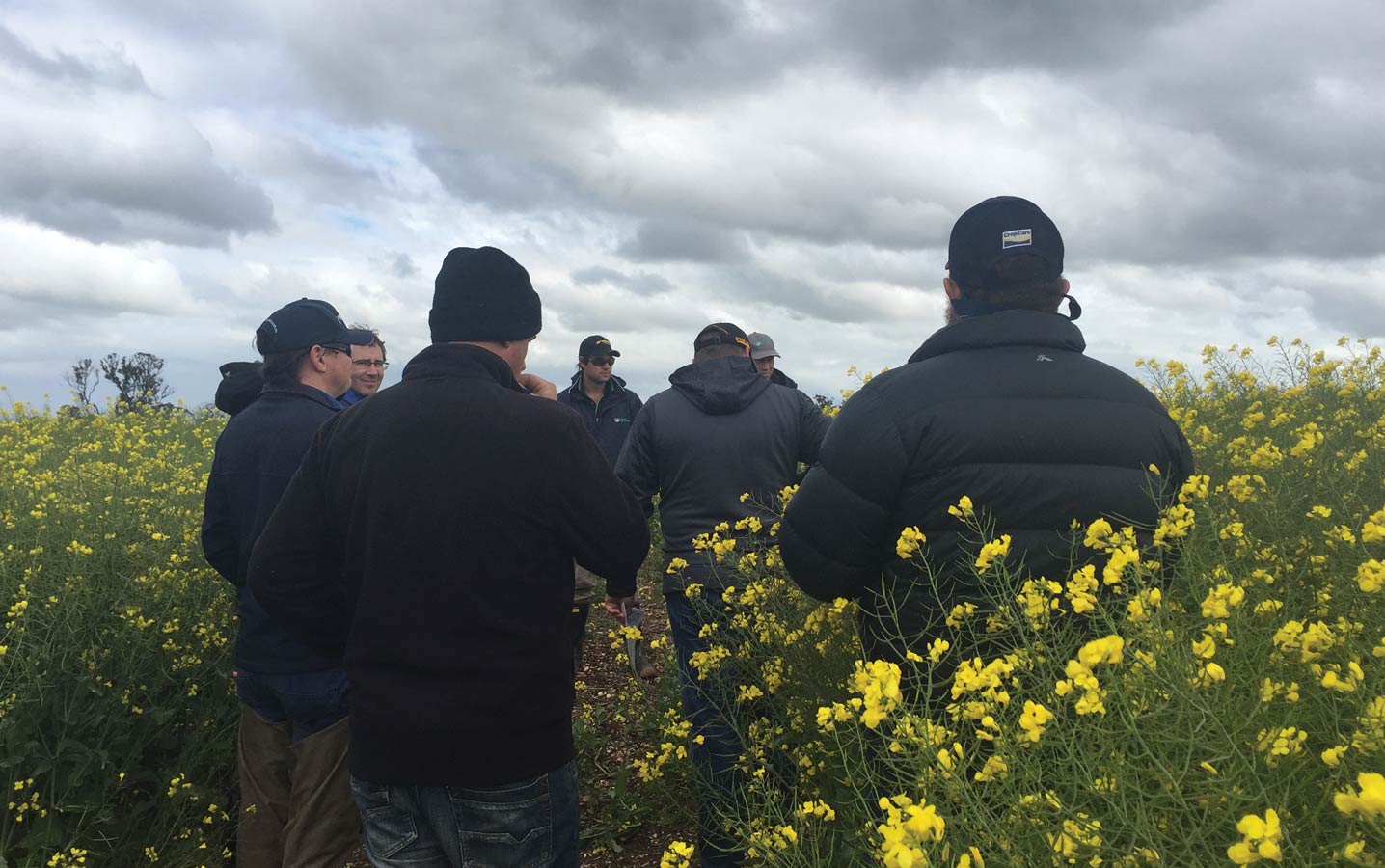Down Under differences and similarities
I was lucky enough to attend a Brassica conference in Melbourne, Australia recently, and although the scenery and location was a huge draw, the agronomic information and sharing was one of a kind. I managed to fall into the hands of one of the most respected and knowledgeable agronomists I’ve ever met, and he found the time to take me and my friend and co-worker Nicole Philp on a 12-hour tour around some of Australia’s biggest canola-producing areas. We learned more than imaginable in that one day. I’ll share some of the ‘cool’ findings.
One fascinating aspect of canola production in Australia was the grazing component. I also experienced this in Kansas and Oklahoma, but it seems to be more common in Australia. Some farmers actually send sheep and cattle into canola fields to graze in the spring, then it regrows and very little yield if any is compromised. Canola is typically in the rosette stage when grazed and is literally eaten down to the ground.
This reminded me of our unfortunate and unwanted ‘grazing’ event Western Canadian canola growers often experience – we call it HAIL! We’ve all heard the stories about a grower getting a massive hailstorm when canola is ready to bolt, then the canola regrows and the grower harvests a near normal crop. Perhaps there is an opportunity here in Canada to harvest canola vegetation early, and harvest seed later!? OK, maybe Australia’s 200 or more days of growing has an advantage over our 100 or so days.
Visual distinction of varieties
Something else intriguing was the ability of some very keen agronomists to identify varieties by looking at them closely in the field. Plant height, distance between pods on the main stem, pod size and even where the pods tend to abort are all features they can use to identify specific varieties. It was hard to believe the accuracy and attention to detail with some of these agronomists. This has me wondering if we mistakenly blame environment, insects, fertility and other things which could cause pod abortion or small pods or other things when there’s actually nothing but genetics at play?
Finally, I developed a fond interest in the Australian findings that special canola varieties are able to penetrate soil up to two metres deep AND breakup hardpan, giving relief from compaction and eliminating the need for a tillage operation to do this. I believe some of our varieties are already doing this without it being our intent, and has made me wonder if our varieties differ in their ability to break up the soil. We may have another project for breeders to explore – a massive root which can break through anything.
My experiences in Australia won’t soon be forgotten. The amazing landscapes, the massive buildings, the street parties and the stories about snakes and spiders. But most of all, meeting other agronomists and farmers from across the world with the same passion and dedication to produce food safely for our growing world was irreplaceable. That’s agriculture!





